After the gold rush: The rise and fall of the Tour of California
A look back at the Sagan Show, career breaks, and chaos
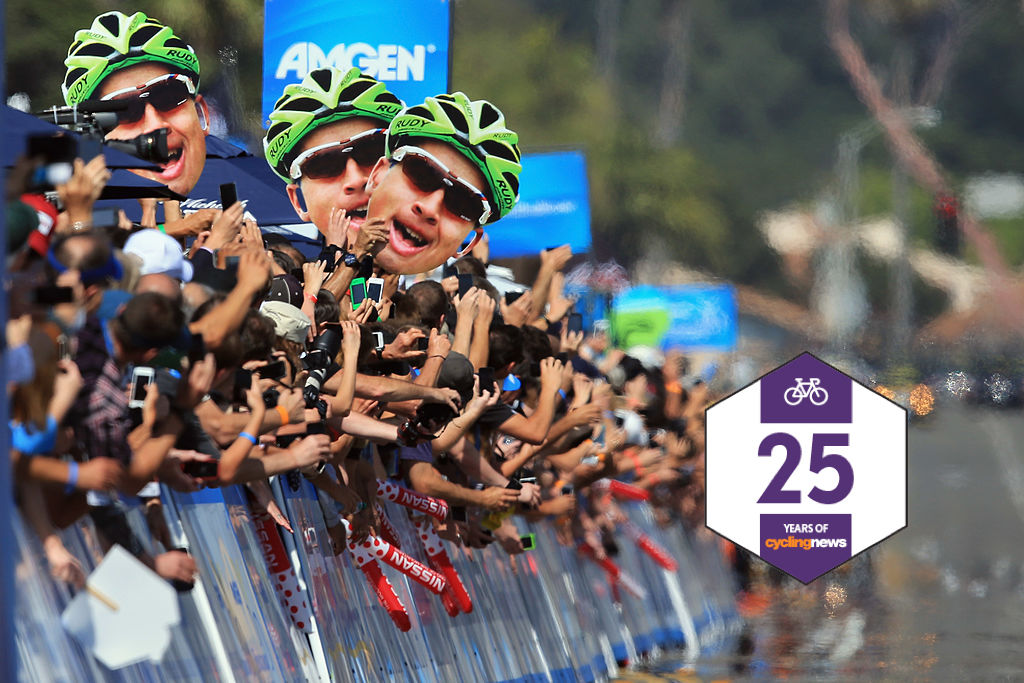
This year, Cyclingnews celebrates its 25th anniversary, and to mark such an important milestone, the editorial team will be publishing 25 pieces of work that look back at the sport over the last quarter of a century.
The soil seemed fertile and the conditions offered no shortage of enthusiasm, but the roots for professional stage racing in the United States just never seemed to take hold. The past 25 years brought more high expectations for a legacy race and, this time around, the gold rush for sprint crowns and yellow jerseys was at the Amgen Tour of California.
Significant races of one week or longer had raised hopes in other decades, from the Red Zinger Bicycle Classic and Coors Classic of the 70s and 80s to the Tour DuPont in the 90s. There was a resurgence amid the peaches, peanuts and pines in the deep south, with a six-year run at the Tour de Georgia to start the millennium.
Before that one-week race was halted in 2008, a push was made 3,000 miles away to provide the platform - with glitz, glamour and golden opportunities - to showcase the sport of cycling to the world. The Amgen Tour of California was an instant hit.
"The crowd size and the fanfare, and the professional level of the race - that was above and beyond what anyone expected the race to be," three-time Tour of California champion Levi Leipheimer tells Cyclingnews.
After a Prologue in San Francisco to start the race in 2006, stage 1 went to his hometown of Santa Rosa. “I mean, coming into Santa Rosa that day, to see how big the crowd was, that was more than I had imagined. And it was the talking point - how big the Tour of California was right off the bat. That for sure was a moment.
"People were on rooftops, streets were full, and it was really loud. I would compare it to the bigger Classics, or Grand Tours in Europe. The Giro always has a lot of fans that turn out, and I would say it was as if we were finishing a stage in Milan or Rome. It had that many people at the finish line."
Get The Leadout Newsletter
The latest race content, interviews, features, reviews and expert buying guides, direct to your inbox!
The first edition went from operations plan to start gun in a little over three months, with organisers hearing "this will never happen" again and again. The first real team effort came to fruition before the riders lined up for the prologue to Coit Tower and became North America’s only UCI WorldTour event, for the women since 2016 and for men in 2017.
"The race was a moving postcard for California. International television coverage was a priority from day one. Both from the fans’ perspective and the riders’ perspective, the race was world-class with organization, execution, and visibility,“ Leipheimer adds.
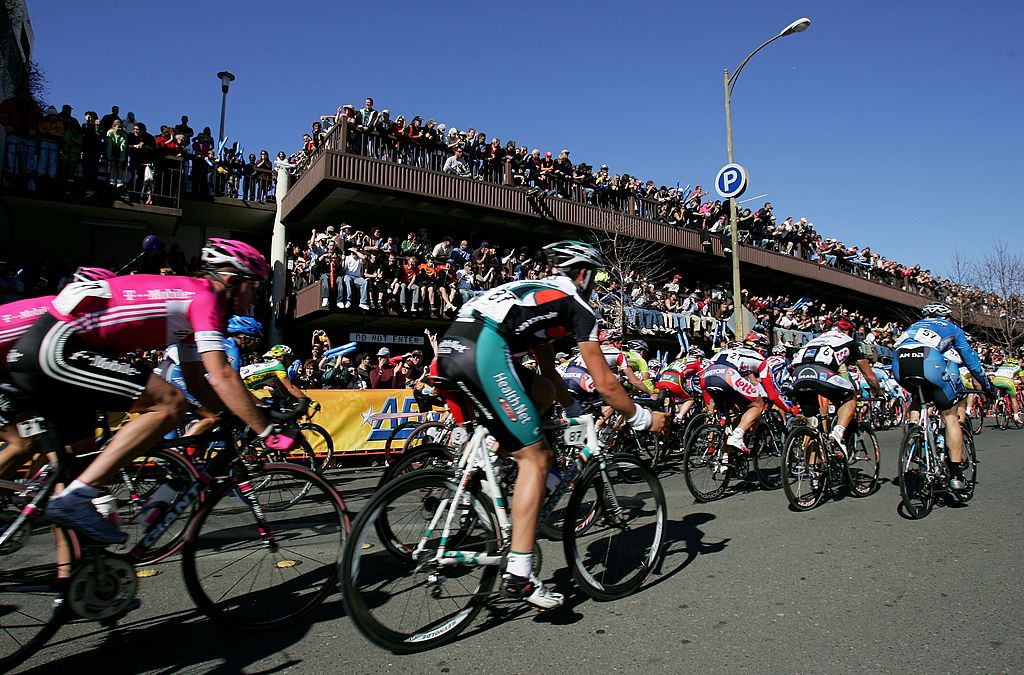
Fast-forward to October 2019. After 14 years, the Amgen Tour of California unexpectedly announced it would go on hiatus, not returning for the 2020 season.
Anschutz Entertainment Group noted that it “has become more challenging each year to mount the race” and said it would re-evaluate options and its business model. In hindsight, that wasn’t such a bad idea, since the pro pelotons for men and women ceased to race outdoors in the US this past year due to the COVID-19 coronavirus pandemic.
But what a ride we had across the past two decades.
It had big terrain and landmarks - Golden Gate Bridge (the race crossed it twice), Pacific Coast Highway, the Rose Bowl in the shadow of the Hollywood Hills. It had big names from Europe - Peter Sagan (17 stage wins and one overall win), Mark Cavendish (10 stage wins), Bradley Wiggins (seven days in the leader’s jersey). It had big personalities from the US - Floyd Landis (who won the first year), Lance Armstrong (who raced in his comeback years), Peter Sagan (he gets on both lists).
It had a sound title sponsor - Amgen, a biopharmaceutical company based in California that develops and manufactures innovative medicines, including Epogen (EPO). It had solid infrastructure - owned by AEG, making it part of a sports and entertainment empire with the Los Angeles Kings, LA Galaxy, and Staples Center.
It had epic weather - snow cancelled a stage in 2011 and relocated a stage in 2015. It had controversy - Rock Racing were limited to five riders in 2008, Lance Armstrong returned to racing in 2009, and Armstrong crashed out in 2010 (beginning his downward spiral).
"Honestly, I think with the name ‘California’ that’s what really helped it to begin with. If you are over in Europe and you say California, everyone knows where that is. So you can see why having that name is so big," says American Chris Horner, who won the 2011 edition riding for Team RadioShack.
"In order to compete with the Grand Tours, you’ve gotta have some epically big stages that blow apart, and then some one-on-one battles. The Tour of California was the Peter Sagan Show. It was get it down to 40 guys and Peter Sagan wins again."
The Sagan Show and the move to May
Winning again and again is what Sagan did. He was good for TV ratings and the fans loved him. He didn’t appear at the race until 2010, when he was an unknown neo-pro riding for Liquigas-Dolmo. He did have stage wins at Paris-Nice, but fans were not yet accustomed to his wheelies and carefree personality. In fact, that first year the Slovakian used an Italian translator for his interviews.
In addition to his 17 stage victories - the most for any one rider - his overall victory in 2015 was Hollywood script worthy. He unexpectedly won the modified individual time trial in Santa Clarita, which had been moved from Big Bear Lake because of snow and shortened to 10.6km at the backup location.
Then on the final stage and climb up Mt. Baldy, he grabbed the overall win from race leader Julian Alaphilippe, who’s advantage was just two seconds, with the time bonuses.
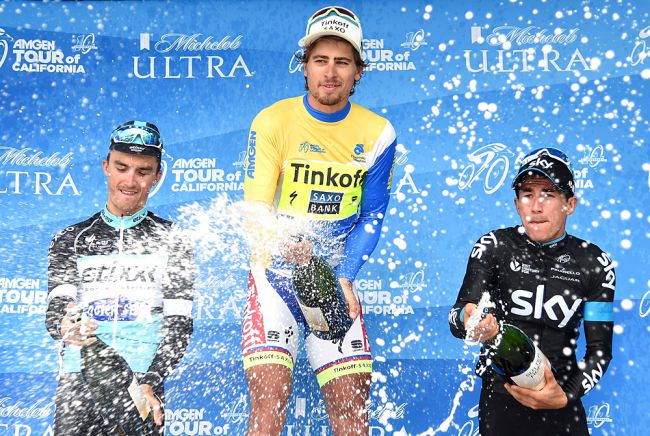
For four years the Tour of California owned February, as it was the biggest race that month on the UCI calendar. It was a UCI 2.1 stage race for its inaugural year, then moved to 2.HC for the next nine years until it was upgraded to WorldTour status.
In 2010, the Tour of California moved from its traditional February slot to May. While the new calendar spot competed directly with the Giro d’Italia, it proved successful in attracting stronger fields for riders gearing up for the Tour de France, who used the opportunity for wide roads, luxurious hotels and all-things California. The move was also made to take advantage of warmer weather and permit the race to use the Sierras and other high mountains, a bet with Mother Nature that did not work out on two occasions because of snow, but did give climbers like Horner, and later Egan Bernal and Tadej Pogačar, a boost.
"I think some of the biggest problems was they needed more teams, and they needed to run more dramatic stages. They kept running the same stages where it would be the same 40 guys coming to the line. People really want to see Alpe d’Huez," says Horner, who used a mountaintop stage 4 win in 2011 to seal his overall title.
"They didn’t run a summit finish until the year I won the Sierra climb (2011). I think that was the first summit finish they had in the race. And really I think that is what makes stage racing - you need something epic, something fantastic like a climb."
Checks and balances
Controversy in the early years of the Amgen Tour of California were put down as growing pains, and some of those were epic as well.
None were more glaring and uncomfortable than several instances related to doping controls for performance-enhancing substances. It was reported by The New York Times in early 2007 that in the inaugural race, riders were not tested for EPO, the performance-enhancing blood boosting drug that had plagued cycling for years and which was made by sponsor Amgen for the treatment of anaemia in cancer and dialysis patients.
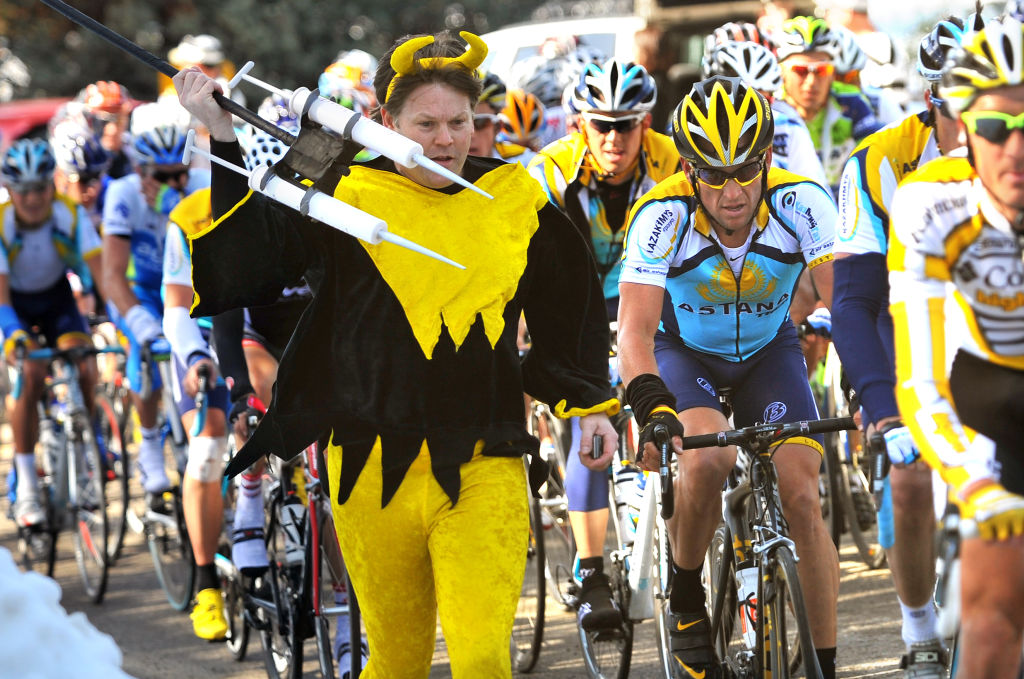
According to the newspaper, company executives were angry and surprised when they heard that EPO testing was not actually carried out as part of ‘standard test’ procedures. The testing was then confirmed to be carried out at the 2007 race.
Then in 2011, a plan for comprehensive blood and urine testing for a variety of substances including growth hormone and EPO was not carried out. Race organisers and USADA together funded the pre-competition testing.
The in-competition testing and controls were supposed to have been managed by the UCI, but only standard urine tests were executed and no blood tests were carried out during the eight-day race, Cyclingnews reported.
The squeeze on domestic teams
Modern American cycling was redefined at the Amgen Tour of California. And it wasn’t all about the men either, as the race became one of the best for the women in the later years.
"The Amgen Tour of California was an important event for the development of racing and teams in the US. On the men’s side, the race was the ‘must do’ event for US teams and incentivized many to upgrade to Pro Continental status when the race went WouldTour, while the development of the women’s race allowed US women and teams to compete and win against the best in the world," says Chuck Hodge, chief of racing and events for USA Cycling.
On the men’s side, there were plenty of gains and losses to recall, like the rolling surf lapping the cliffs along the Pacific. Top riders like Leipheimer and Horner gained acclaim on home turf. Rising stars like Tejay van Garderen, Taylor Phinney, Chad Haga, Joe Dombrowski, and a host of Continental riders took the spotlight. Many American riders were tasked with rebuilding the reputation of the sport following confessions to doping.
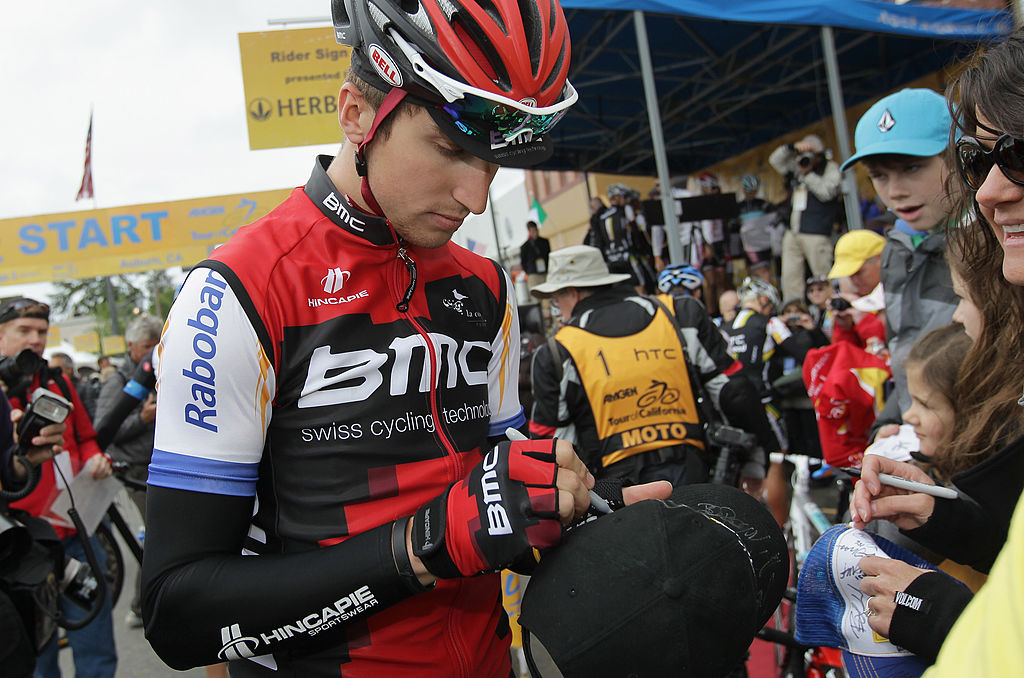
It put US cycling on the world map, but not all the US riders had access to the map itself. The event was proud of its robust international flair, which meant that not all the US teams received invitations to compete and share the spotlight.
"The ATOC gave America a premier international event that was consistently attended by some of the best teams and riders in the world. I feel like it was a big challenge for the ATOC to grow into a huge international event, meet the UCI guidelines, and also try to include the domestic programs. The ATOC needed the domestic teams and vice versa, but it wasn’t that simple," says Jonas Carney, who has been a race director at Rally Cycling since the team’s start in 2007. Under the name Kelly Benefit Strategies, the team first competed in California in 2008 as a Pro Continental team.
"California provided us with an opportunity to compete on home soil with the biggest teams and riders in the world. For a non-WorldTour team, the biggest challenge is to gain access to those big races."
By the time the Tour of California reached the pinnacle of its UCI life, as a WorldTour event in 2017, only two Continental teams received invitations.
"For the domestic teams, it was big and a good reason for their sponsors to keep a following here. It made it really easy for a team like Jelly Belly, Rally and others, to go ahead and renew their contracts for the following year. I think it (ATOC) kept US-sponsored teams interested to stay in the sport," says Horner.
He notes a rider like JJ Haedo of Toyota-United, who won two stages at the 2007 Tour and them signed with Team CSC. There is also Toms Skujins, who won his first Tour of California stage with the Continental squad Hincapie Racing in 2015 after a solo effort into San Jose and then returned as member of Cannondale-Drapac, then Trek-Segafredo. Or in 2017 when youngster Sepp Kuss, now with Jumbo-Visma, soloed across the break to help Rally Cycling’s Evan Huffman win a stage.
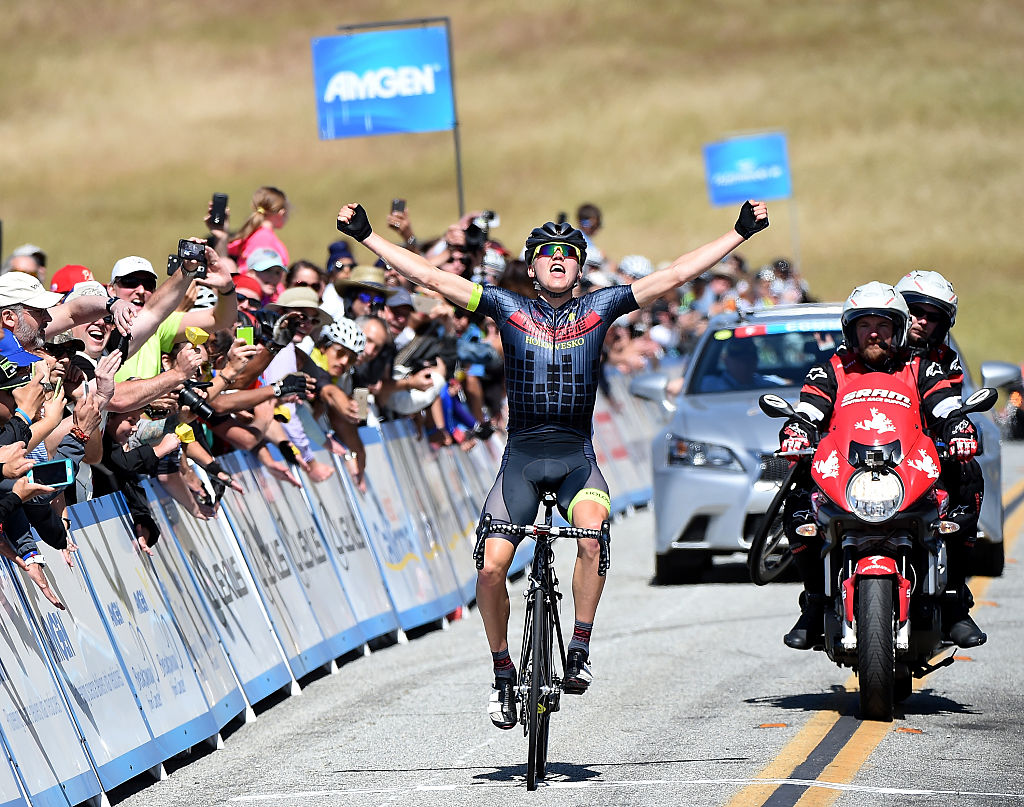
Leipheimer concurred that race played a big part in domestic cycling for career development, not just team publicity.
"I always thought for the domestic riders, it was a huge opportunity. Even if they could just get in a breakaway, it meant a lot to them. It could potentially extend their contracts with their team. It was by far the biggest race they could do all season," he says.
"It’s obvious that domestic Conti or Pro Conti teams do not have many opportunities to compete in a big race, especially a big race at home. It would mean a lot to their sponsors. But I would say even more importantly it’s not here (ATOC) to inspire the next generation of cyclists. There could be the next great American cyclist coming to watch the stage finish in Sacramento, just a nine-year-old kid, for instance.
"When I was growing up, the Coors Classic was happening. Of course it wasn’t on television, but I certainly read the cycling magazines that covered the race. It was part of what inspired me."
In 2007, Leipheimer took the lead after the prologue win in San Francisco, and the course suited him to be dressed in yellow for a homecoming in his hometown the next day. But a massive crash on the finishing circuits of stage 1 in Santa Rosa put him and many of the heavy favourites in chasing mode with 10km to go. They would finish more than a minute behind sprint winner Graeme Brown of Rabobank, and a new race leader, the little-known Ben Jacques-Maynes of Priority Health, who had been third in the prologue.
But 15 minutes later, the race jury took an unusual decision to neutralise the gap to the front group at the 10-kilometre mark, not the standard 3km to go mark under UCI rules, noting the size of the crash which was caused by raised lane markers on the road.
As reported by Cyclingnews in 2007, the Continental rider Jacques-Maynes was gracious with the loss of what could have been a defining moment in his career: "I'm not in a position to question the commissaires and I just have to live with it and keep racing my bike. I'm paid to pedal, and they are paid to make those decisions. It is hard to swallow that, but that is what we have to do.”
Women are equal
The race was especially a bright spot for the women’s professional peloton. The women’s race started as a one-day criterium before adding a separate individual time trial, and then becoming a true stage race in 2015, with a three-day stage race ahed of the men's event, and the event took on the official name of Amgen Tour of California Women’s Race empowered with SRAM.
"It was a very well organized, well-promoted race where we got high quality TV coverage. ToC really brought cycling, and especially women's cycling, into mainstream media in California and that was really important for teams and especially American sponsors of cycling teams," says Katie Hall, a four-time stage winner across five years, as well as overall title in 2018 riding for UnitedHealthcare Pro Cycling.
"I love California. It was where I lived for 10 years and getting to share those roads with the pro peloton was really special to me. In ToC 2016, we raced up Coleman Valley and past the place I got married. I loved racing on home roads and that was extra motivating for me."
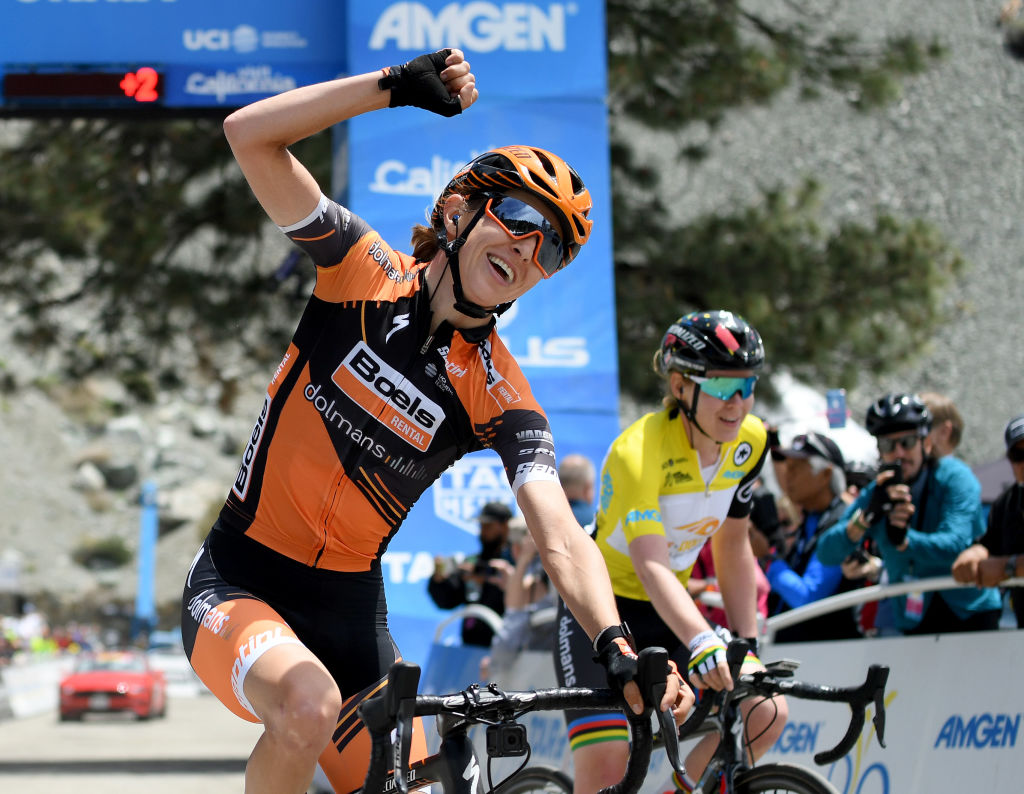
Hall was ecstatic when the organisers of the Tour of California included a summit finish to Mt. Baldy for the 2019 women’s edition. She was even happier at the summit when she crossed the line for the win, alongside her Boels-Dolmans teammate Anna van der Breggen. Hall would finish second overall in the race and Van der Breggen took the title for a second time in three years.
Organisers were also applauded for offering equal prize money for the three days of racing and doing away with the dated 'podium kiss' tradition during award ceremonies. Hall noted that it was a challenge to get the European teams to California for just three or four days, of racing, especially with the logistics of hauling the bikes to and from.
It is probably the Women’s event that will be missed the most with the demise of the Tour of California. There are only three UCI road events on the 2021 US calendar, with the Joe Martin Stage Race and Tour of the Gila providing multi-day races. The earning opportunities are shrinking stateside, but not gone.
Changing tide
The Tour of California was billed by race organisers as "the largest annual spectator sporting event in California and largest cycling event in North America, drawing over 2 million spectators annually". It had a legacy as a sporting event, a promotional tool for California and a launching pad for pro careers.
"California didn’t define my career in many ways, but it did financially set me up for the future, more so than I thought," says Horner.
"I won the Tour of the Basque Country, the best quality stage racing field in the world. I got back to the States, I could walk around the mall and nobody would recognize me. When I won Tour of California, I got back to my house in San Diego, and I got recognized by staff and people in the Apple store. And I go to Fashion Valley Mall, I’m getting recognized at the mall. On a professional level, Tour of California was so much more important.
"And that’s why NBC hired me, it was during Tour of California when they were interviewing me, and all they have to do is put a microphone in front of my face and all of a sudden I’ve got something to say."
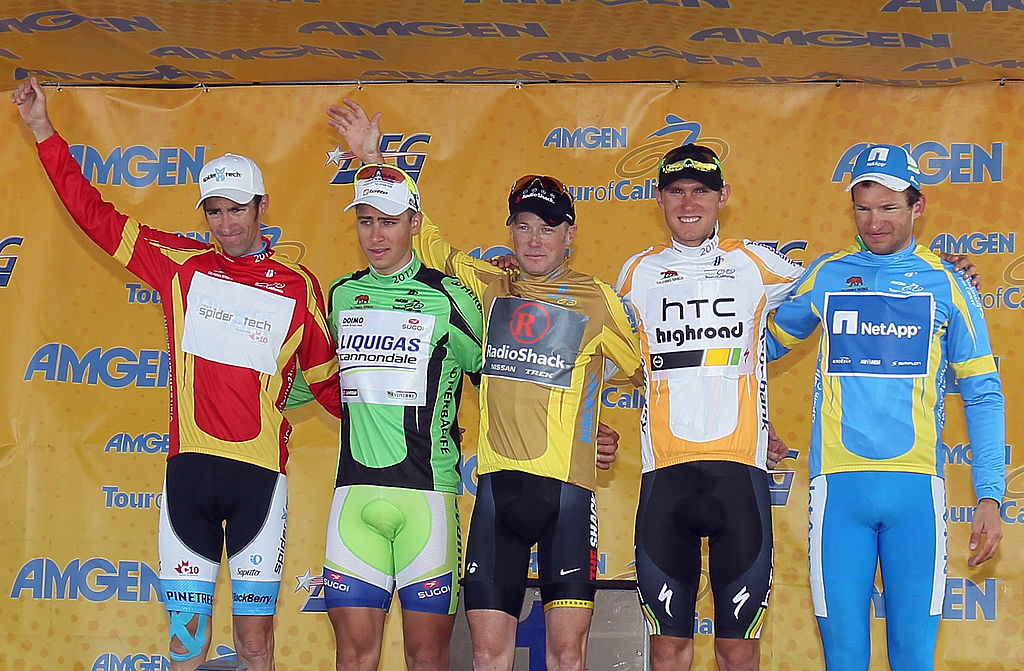
The US cycling scene for pro riders and teams has not washed away because the Amgen Tour of California went away. Over the decades there have been waves of races, some bigger swells than others. The talent is there, the fans are there, and now they need a place to compete.
"Much like the Tour DuPont, Tour de Georgia and Tour of Missouri, the Amgen Tour of California was an incredible event that will be missed - but one that future races will be able to build upon,” adds Hodge.
It sounds like the 'hiatus' is pretty permanent. Cyclingnews reached out to representatives from AEG, and were told there has been no statements made about the race since 2019.
But there’s nothing wrong with a little hope in a new year, especially after the tidal wave of chaos from a pandemic, and a little California dreaming to anxiously await the next race in the US.
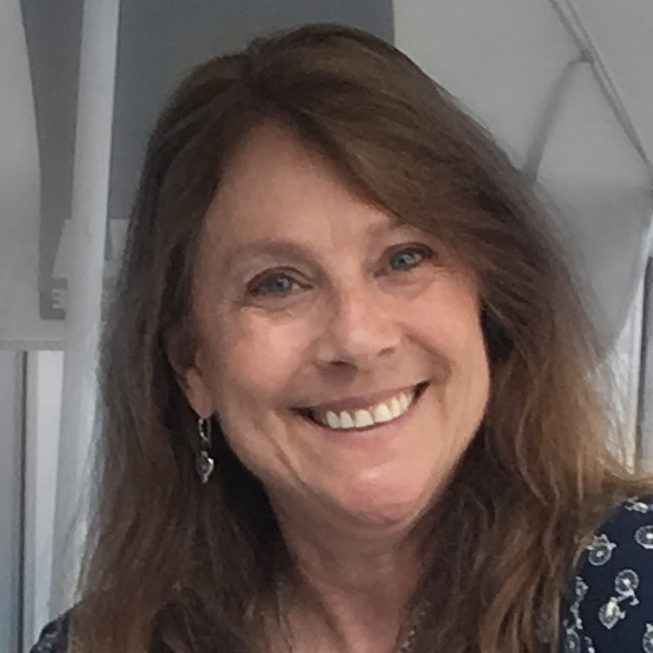
Jackie has been involved in professional sports for more than 30 years in news reporting, sports marketing and public relations. She founded Peloton Sports in 1998, a sports marketing and public relations agency, which managed projects for Tour de Georgia, Larry H. Miller Tour of Utah and USA Cycling. She also founded Bike Alpharetta Inc, a Georgia non-profit to promote safe cycling. She is proud to have worked in professional baseball for six years - from selling advertising to pulling the tarp for several minor league teams. She has climbed l'Alpe d'Huez three times (not fast). Her favorite road and gravel rides are around horse farms in north Georgia (USA) and around lavender fields in Provence (France), and some mtb rides in Park City, Utah (USA).